Data Show Encouraging Growth in Mathematics Achievement, While Literacy Skills Acquired by Students Remain Stable Across Ontario
Students in English- and French-Language Schools
NEWS
TORONTO, September 28, 2023—The Education Quality and Accountability Office (EQAO) has released provincial data from its 2022–2023 assessments, which marks the second year of the agency’s reporting on the student achievement results of its digitalized and modernized provincial assessments.
More than 580 000 students across the province completed EQAO assessments at the elementary and secondary levels of the English- and French-language school systems during the 2022–2023 school year. EQAO is reporting on achievement results as well as data from student questionnaires. This provides contextual and attitudinal information about student learning to build a fuller picture of learners’ contexts and the factors that influence achievement.
EQAO data provide an independent snapshot that shows whether students are meeting curriculum expectations in reading, writing and mathematics at key stages of their education.
ASSESSMENT DATA AND OBSERVATIONS
Because of the substantial changes to the assessments in the 2021–2022 school year (the shift from paper-based to digital; the introduction of a new mathematics curriculum, which required redesigned mathematics assessment components), and in the context of establishing up-to-date baselines for EQAO’s digital assessments, new trendlines were set and first used in 2021–2022.
Assessment results from last year are provided along with those from the 2022–2023 school year to show trends in achievement and attitudes over the last two years. Such analyses of results contribute to a better understanding of student learning over time.
STUDENTS IN ENGLISH-LANGUAGE SCHOOLS:
ASSESSMENTS OF READING, WRITING AND MATHEMATICS, PRIMARY AND JUNIOR DIVISIONS
PRIMARY DIVISION (GRADE 3)
According to the data from 2022–2023, Grade 3 student achievement results, which are given in relation to the provincial standard (Levels 3 and 4), have remained stable in literacy relative to those in 2021–2022, and have increased slightly in mathematics.
Assessment results for all participating students:
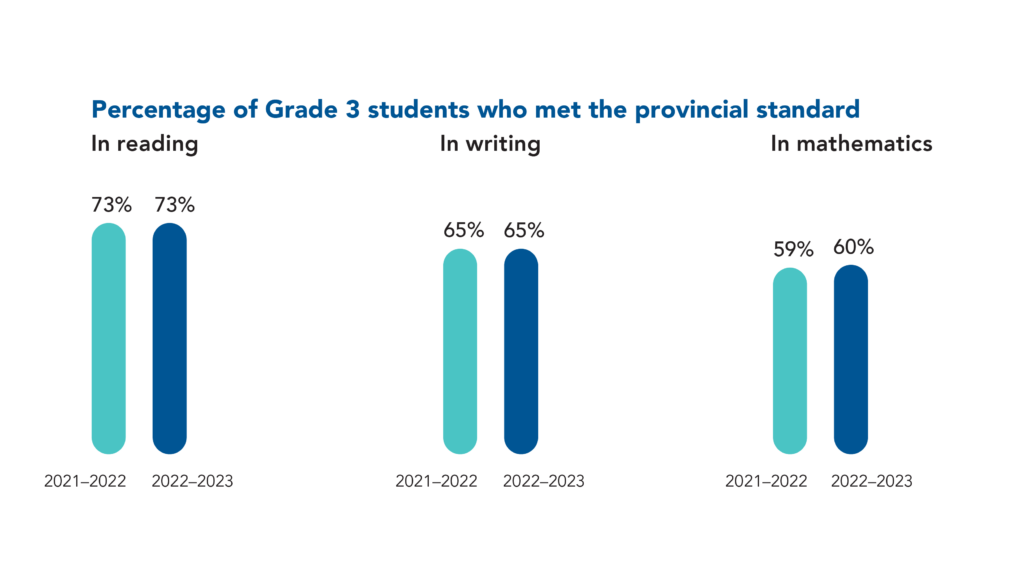
Learners’ context:
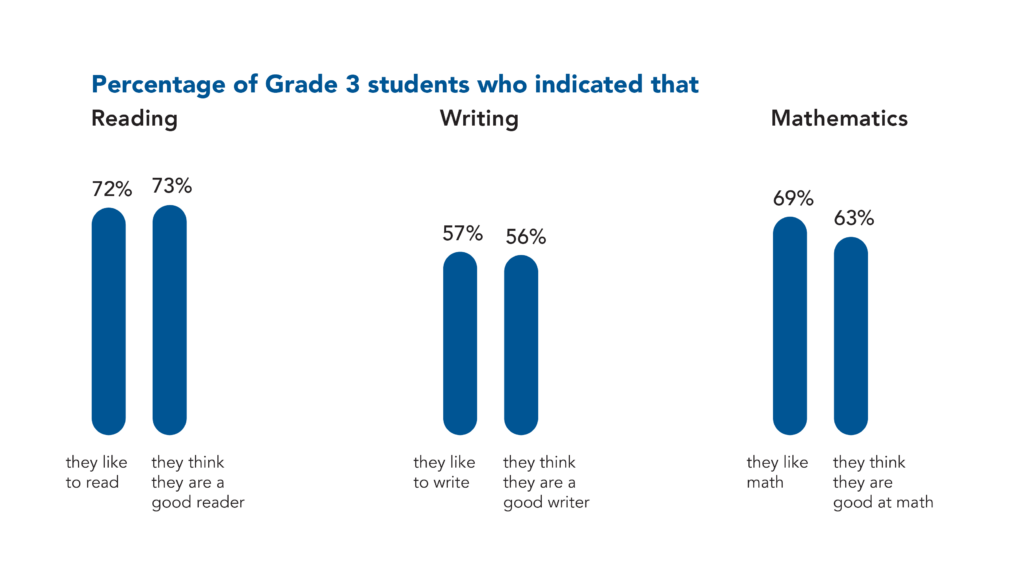
JUNIOR DIVISION (GRADE 6)
According to the data from 2022–2023, Grade 6 student achievement results, which are given in relation to the provincial standard (Levels 3 and 4), have remained stable in literacy relative to those in 2021–2022, and have increased in mathematics.
Assessment results for all participating students:
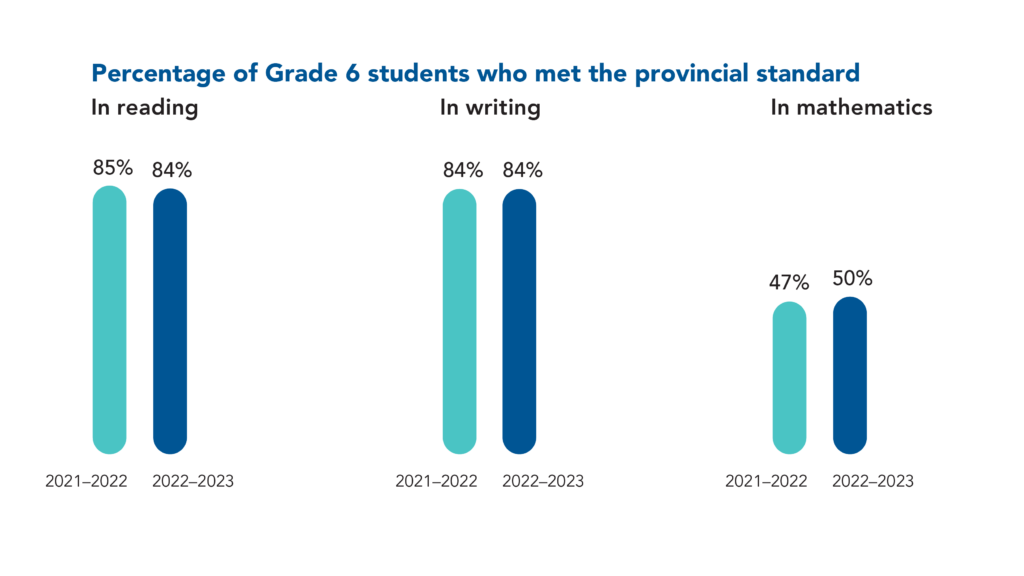
Learners’ context:
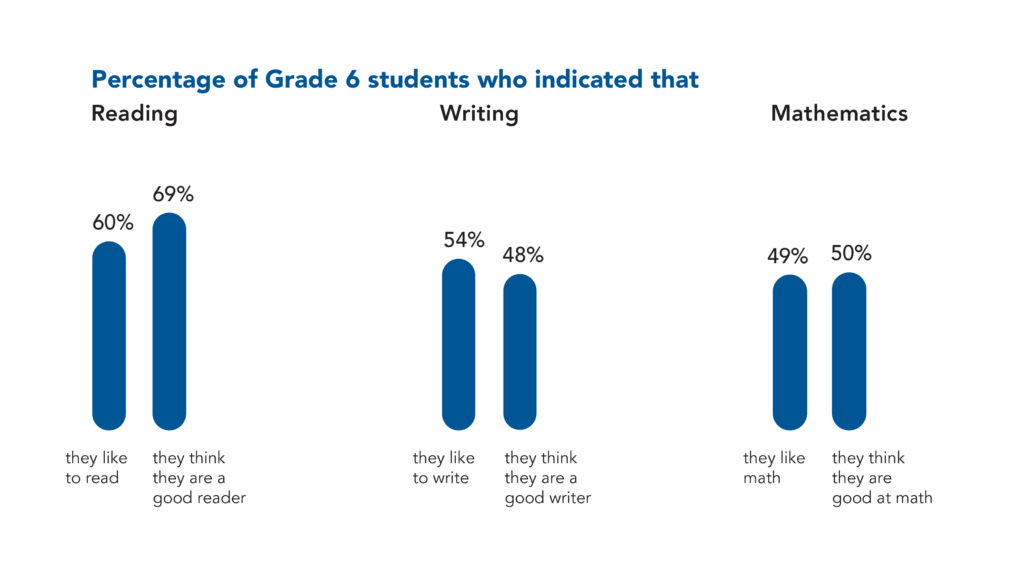
GRADE 9 ASSESSMENT OF MATHEMATICS
The Grade 9 Assessment of Mathematics is a computer adaptive assessment that measures the mathematics skills students are expected to have learned by the end of the Grade 9 mathematics course according to The Ontario Curriculum. With the implementation of a universal de-streamed mathematics curriculum in 2021, all Grade 9 students now write the same EQAO assessment.
According to the data from the 2021–2022 EQAO assessments, Grade 9 student achievement results, which are given in relation to the provincial standard (Levels 3 and 4), have increased in mathematics from those of 2021–2022.
Assessment results for all participating students:
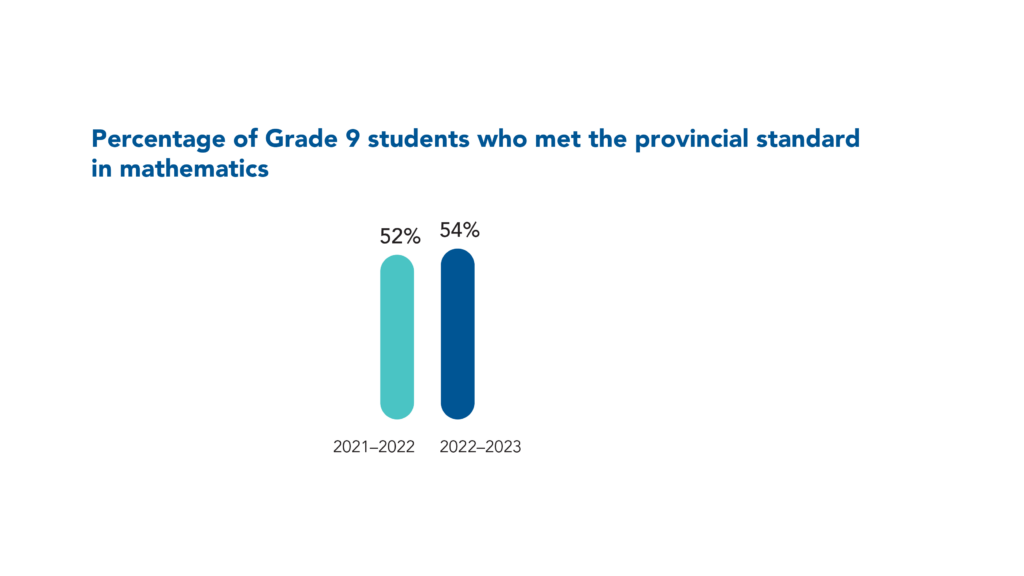
Learners’ context:
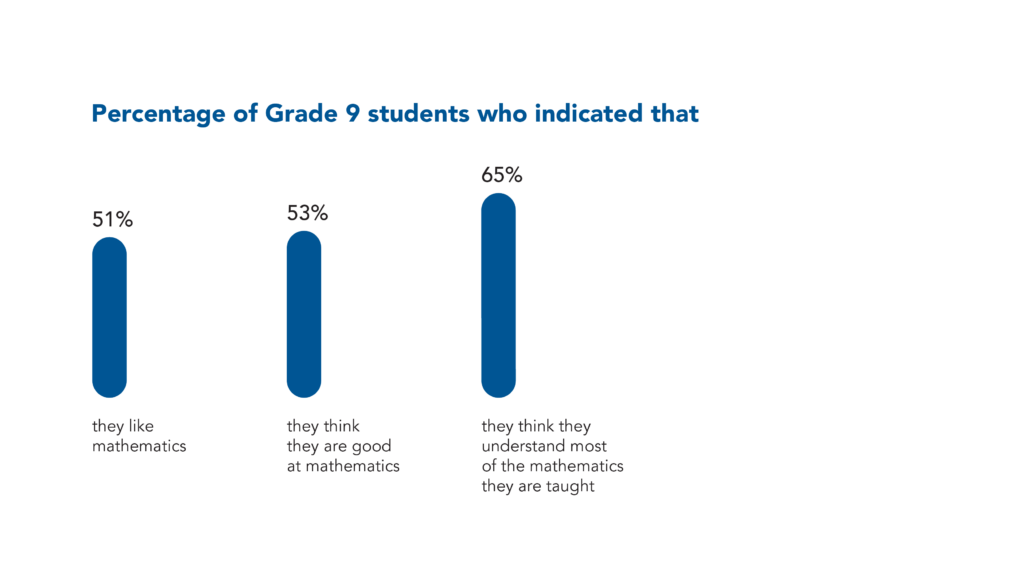
ONTARIO SECONDARY SCHOOL LITERACY TEST (OSSLT)
The OSSLT is a computer-based assessment that measures whether students are meeting the minimum standard for literacy across all subjects according to The Ontario Curriculum. First-time eligible students typically take the assessment in Grade 10.
According to the data from 2022–2023, overall success rates on the OSSLT are high, showing stability in the basic literacy skills acquired by Ontario students.
The gap in achievement between students enrolled in academic and those enrolled in applied courses continues to be an area that requires attention.
Assessment results for all participating students:
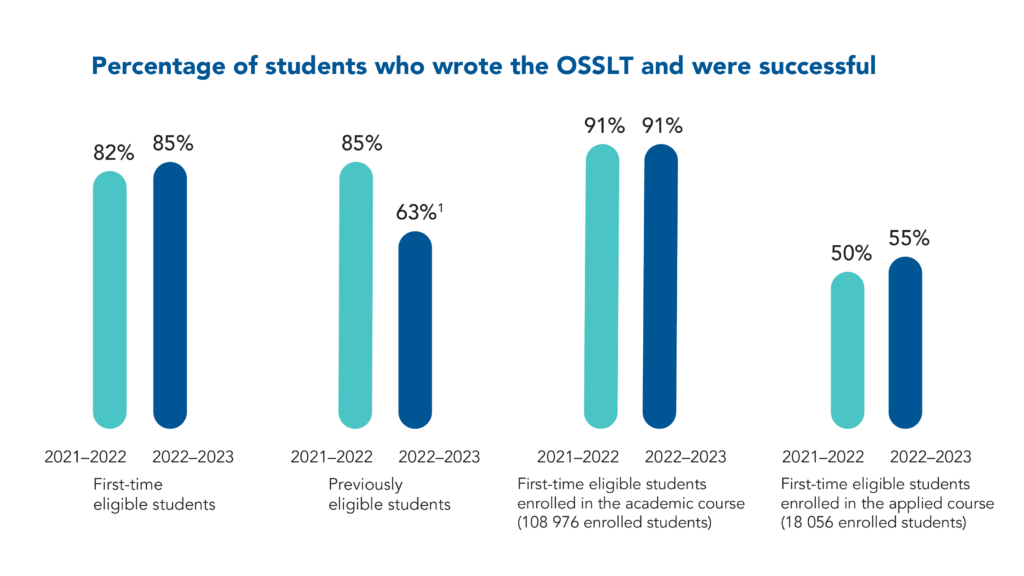
Learners’ context:
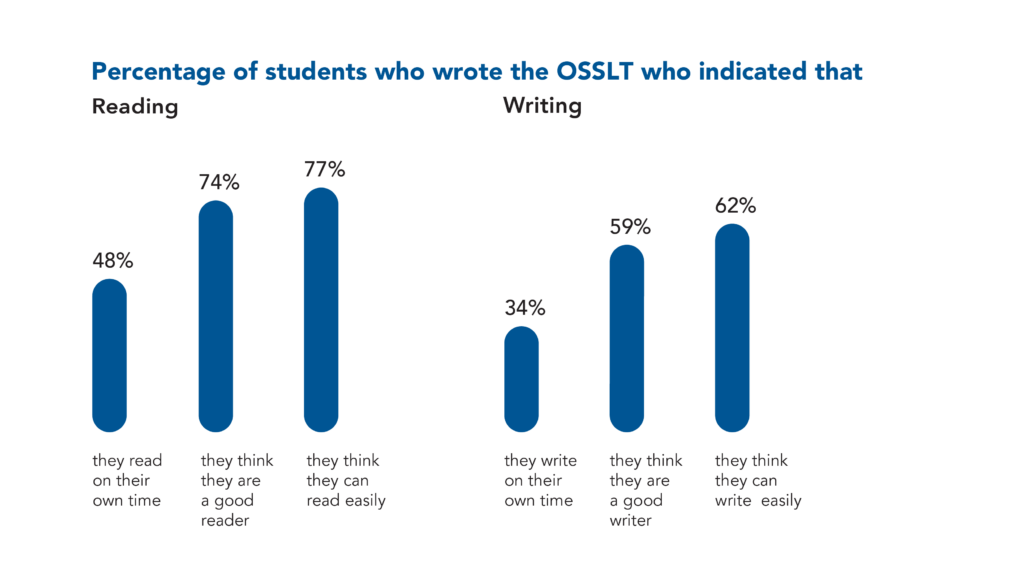
STUDENTS IN FRENCH-LANGUAGE SCHOOLS:
TESTS EN LECTURE, ÉCRITURE ET MATHÉMATIQUES, CYCLES PRIMAIRE ET MOYEN2
The Test en lecture, écriture et mathématiques, cycle primaire (Grade 3) and cycle moyen (Grade 6), are computer-based assessments that measure the reading, writing and mathematics skills students are expected to have learned by the end of Grades 3 and 6 according to The Ontario Curriculum.
CYCLE PRIMAIRE (GRADE 3)
According to the data from 2022–2023, Grade 3 student achievement results, which are given in relation to the provincial standard (Levels 3 and 4), have increased in mathematics and increased slightly in literacy relative to those from 2021–2022.
Assessment results for all participating students:
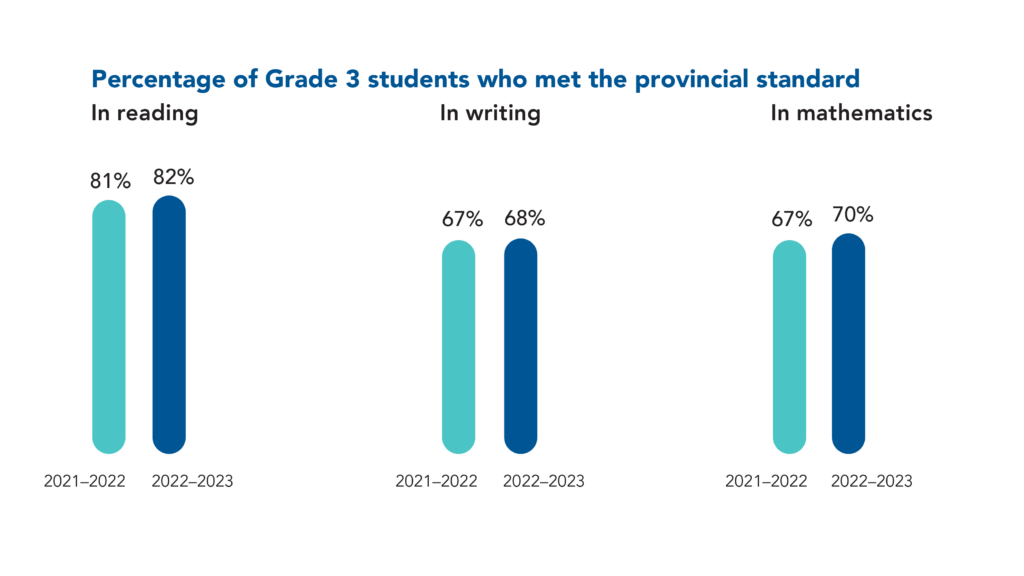
Learners’ context:
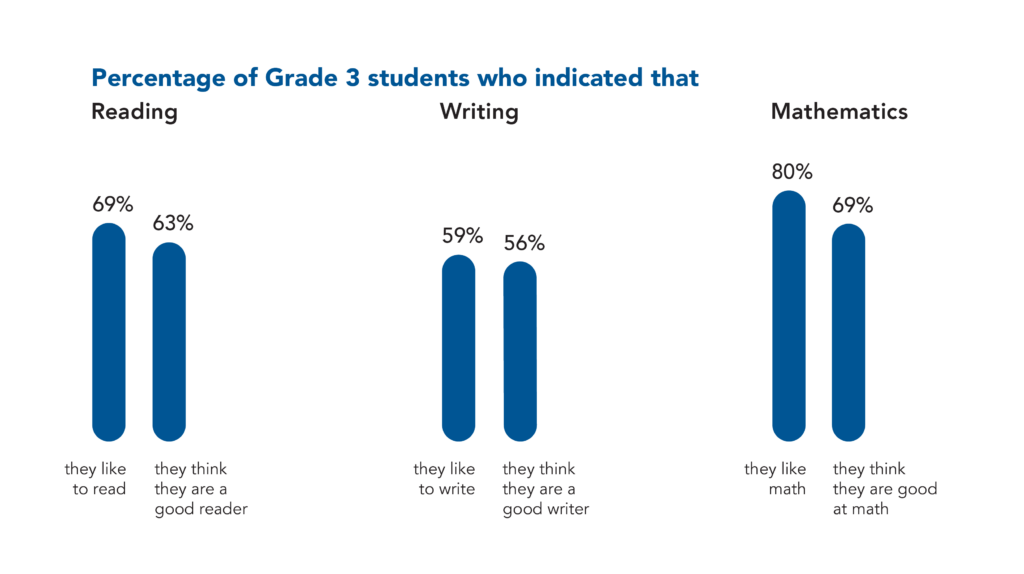
CYCLE MOYEN (GRADE 6)
Assessment results for all participating students:
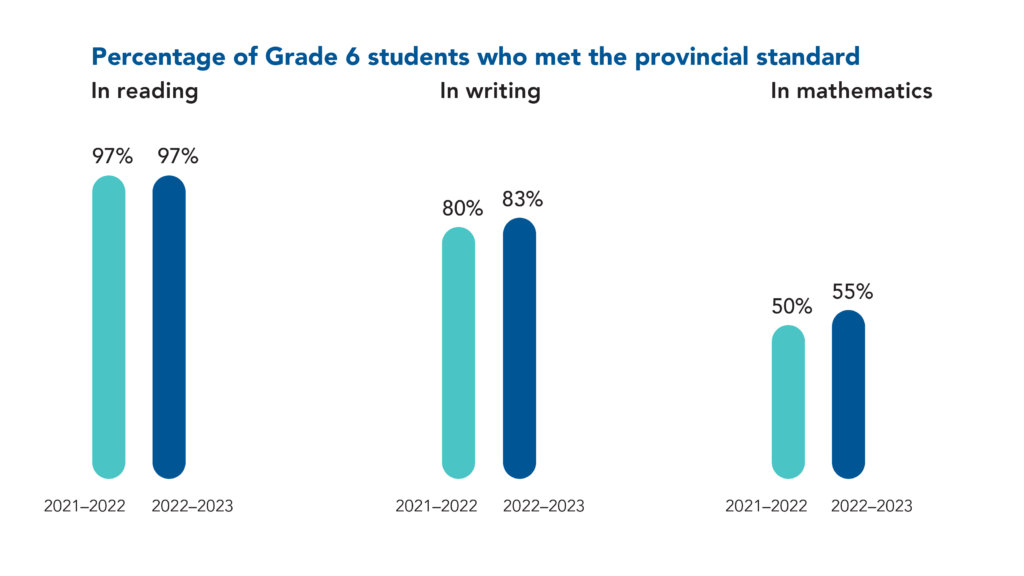
Learners’ context:
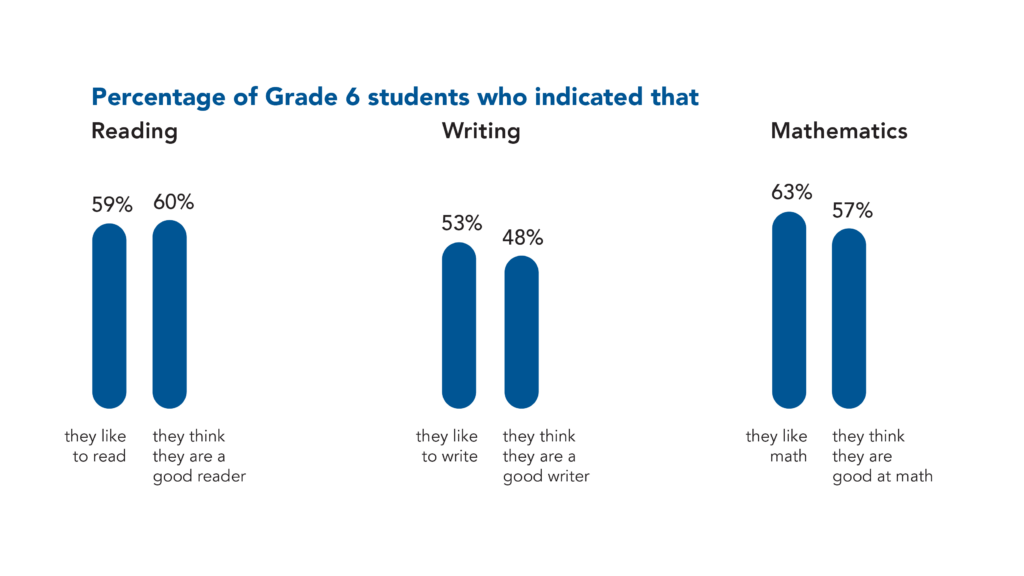
TEST DE MATHÉMATIQUES, 9e ANNÉE
The Test de mathématiques, 9e année is a computer adaptive assessment that measures the mathematics skills students are expected to have learned by the end of the Grade 9 mathematics course according to The Ontario Curriculum. With the implementation of a universal de-streamed mathematics curriculum in 2021, all Grade 9 students now write the same EQAO assessment.
According to the data from 2021–2022, Grade 9 student achievement results, which are given in relation to the provincial standard (Levels 3 and 4), have increased in mathematics relative to those from 2021–2022.
Assessment results for all participating students:
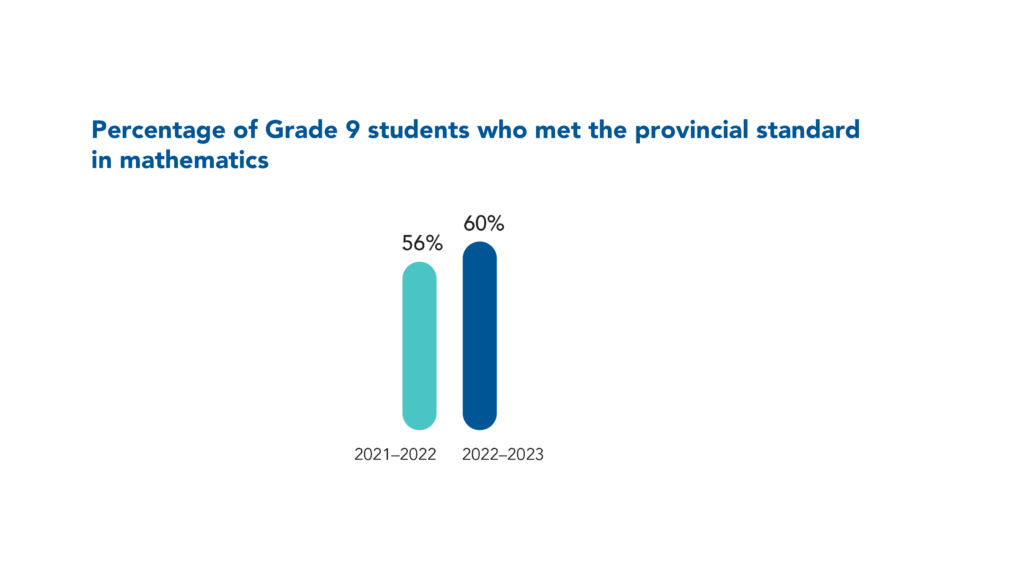
Learners’ context:
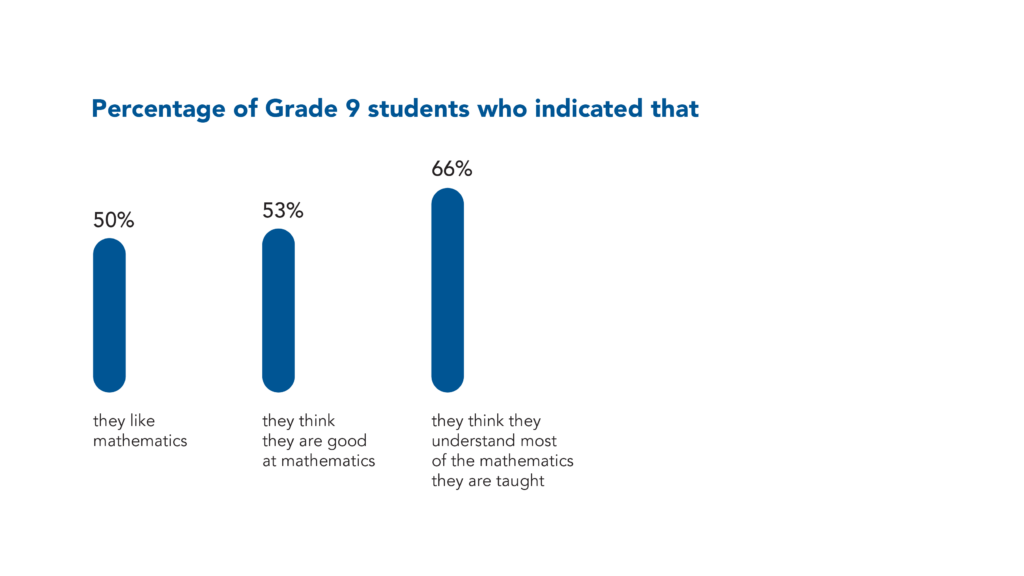
TEST PROVINCIAL DE COMPÉTENCES LINGUISTIQUES (TPCL)
The TPCL is a computer-based assessment that measures whether students are meeting the minimum standard for literacy across all subjects according to The Ontario Curriculum. First-time eligible students typically take the assessment in Grade 10.
According to the data from 2022–2023, overall success rates on the TPCL are high, showing stability in the literacy skills acquired by Ontario students.
The gap in achievement between students enrolled in academic and those enrolled in applied courses continues to be an area that requires attention.
Assessment results for all participating students:
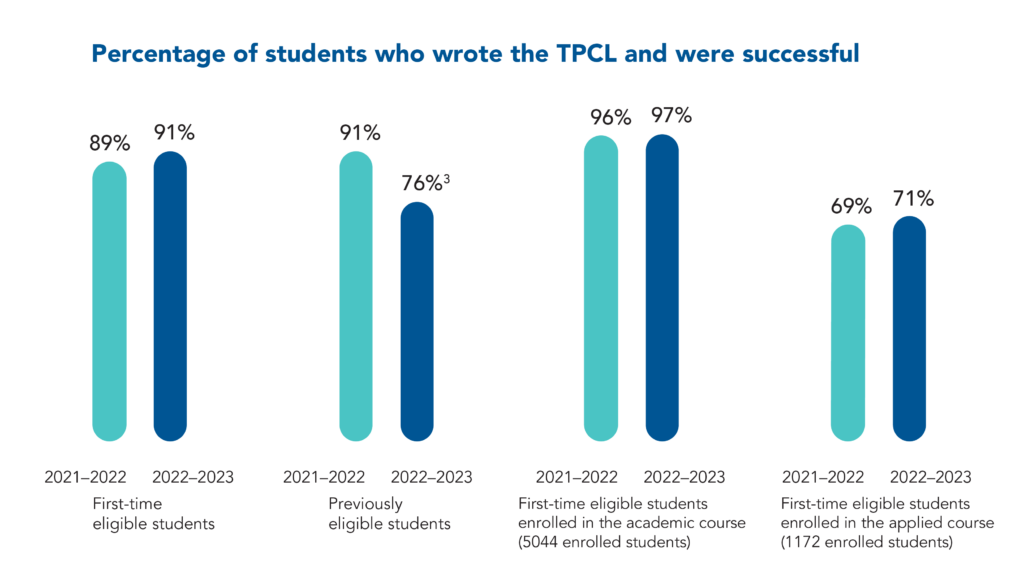
Learners’ context:
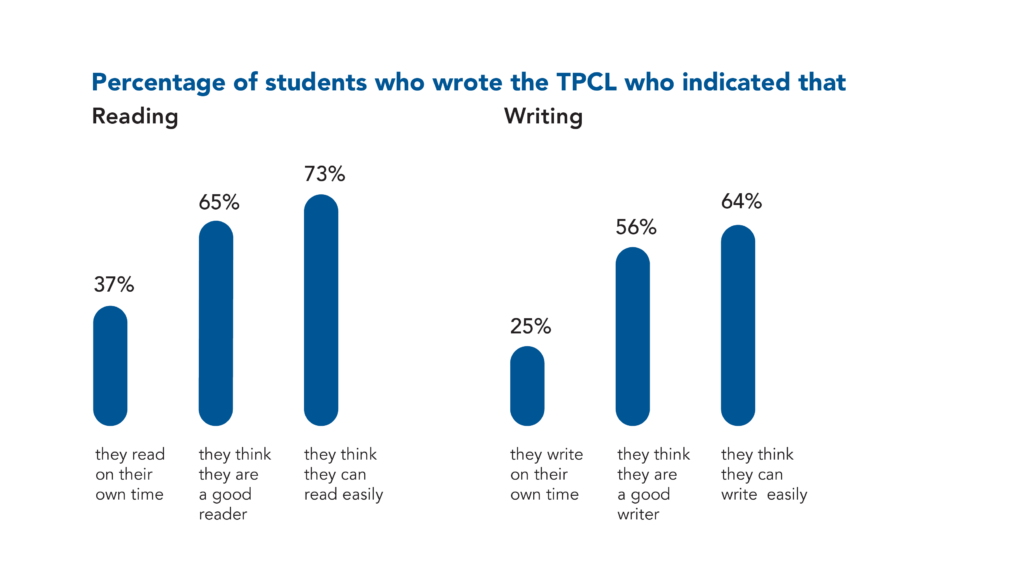
QUOTES

“EQAO is invested in supporting the growth of each student in Ontario and in helping ensure our publicly funded education system is accountable to Ontarians. Administered in elementary and secondary schools across the province, our large-scale assessments provide reliable data and evidence-informed insights into student learning and perceptions to facilitate student success. It is crucial that every Ontarian be able to access this data to support educational equity and inform initiatives leading to positive changes in the outcomes of the next generation.”— Cameron Montgomery, Chair – EQAO

“After two years of our new digital assessment program following the pandemic-related disruptions to the school system, it is encouraging to see progress in mathematics achievement while reading and writing achievement remains stable across the province. Data from EQAO’s modernized assessments provide important information about how students are doing at a specific time. It offers achievement results in addition to valuable insights on students’ own experiences as learners and can be best understood when examined over time to identify trends, thereby building a fuller picture of student learning. In conjunction with other credible information available, EQAO data is useful to the education community and other partners as we continue to support positive student outcomes across the province.”— Dan Koenig, Chief Executive Officer, EQAO
For further information, please contact
Sophie Auclair
Communications Officer